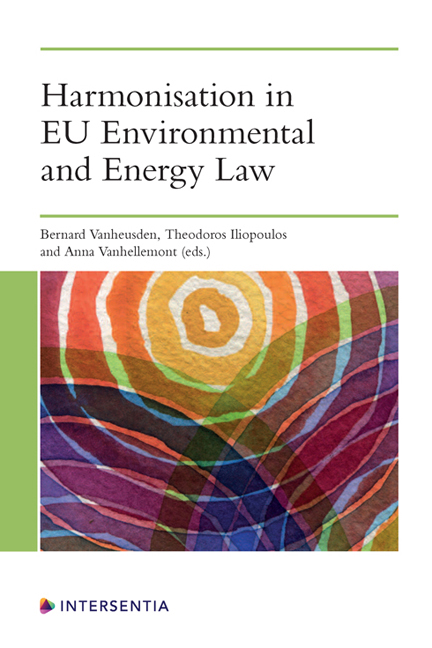Harmonising Environmental Standards from the Guadalquivir to the Danube Delta: How can the Circle be Squared?
Published online by Cambridge University Press: 26 May 2022
Summary
INTRODUCTION
At first an obscure field in the 1970s, and having long remained the preserve of engineers and biologists, the environmental policy and the law which it gave rise have ended up asserting themselves both on public and private actors. Although it was not mentioned in the 1957 Treaty of Rome, environmental concerns have, through the various treaty reforms, gradually been able to establish themselves as one of the greatest values enshrined in the EU founding treaties. Environmental protection is not only a core objective of the Union; it has also been placed on equal footing with economic growth and the internal market.
However, the harmonisation process of environmental rules has been fraught with controversies since the inception of this policy. When it comes to decide which ecosystems and species to protect, which hazardous products to control or to ban, which factories to authorise, the thresholds for reuse and recycling waste, EU institutions and the Member States cross swords.
It is the aim of this chapter to explore some of the key issues arising in the harmonisation process of environmental rules. The discussion is structured in the following manner. The focus is firstly placed upon the drivers of the EU environmental policy and how they shaped that policy. In a second section, we shall contemplate the conundrum of legal bases upon which environmental measures can be adopted and the influence they exert on the nature of harmonisation. The third section addresses the numerous challenges faced by the protagonists of the European environmental policy and the hurdles to overcome in determining the common denominator among Member States.
GENERALITIES
THE ENVIRONMENTAL CRISIS
The scales and rates of the changes induced by human activities on ecosystems have been so significant on a geological time scale that it comes as no surprise that we are entering a new geological epoch, the Anthropocene. Indeed, overwhelming scientific evidence highlights the extent to which Earth’s atmosphere (destruction of the ozone layer, emission of greenhouse gas (GHGs), etc.), lithosphere (e.g., quarrying, landscaping, urban sprawl, soil erosion, etc.), hydrosphere (pollution of water, salinisation, anthropologically induced floods and droughts, sedimentation of lakes and rivers, rising of sea level, etc.)
- Type
- Chapter
- Information
- Harmonisation in EU Environmental and Energy Law , pp. 45 - 70Publisher: IntersentiaPrint publication year: 2022



